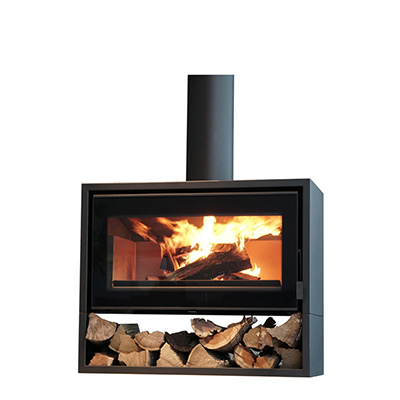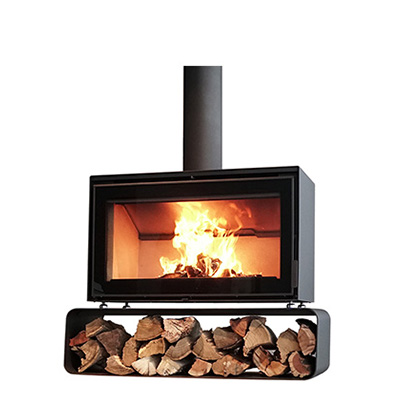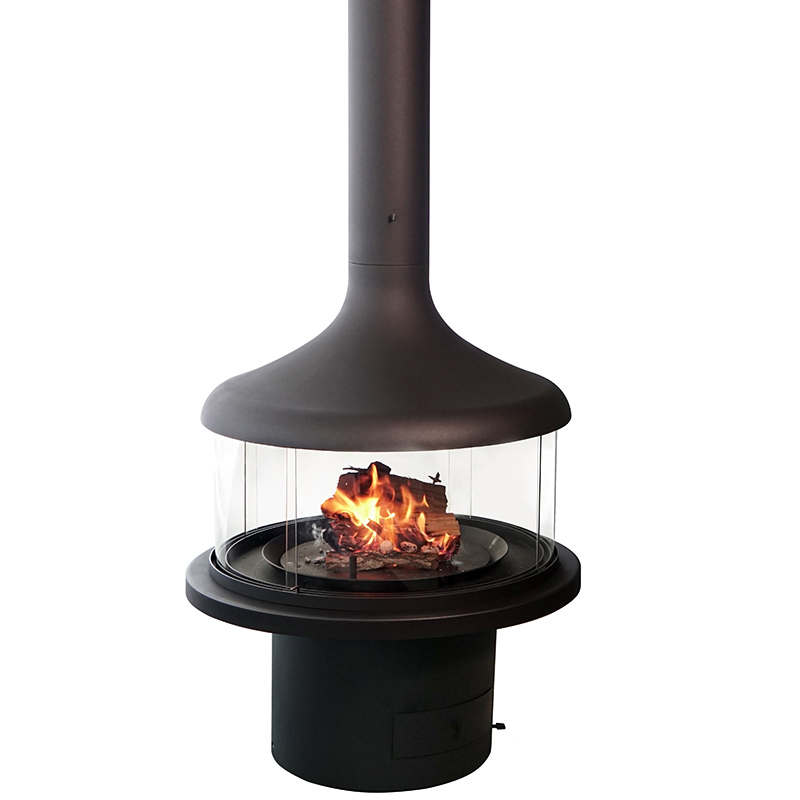中外壁炉的文化隔阂
<p>记得小时候读过的《化雪的日子》,巴金爷爷说“壁炉里火燃得正旺,不断地射出红蓝色的光。”当时只觉得<a href="http://www.seguin.com.cn/" target="_self">壁炉</a>一定是个美丽而神秘的物件,到底是个什么样子却一无所知。长大后,西方的生活经历让我慢慢了解到,其实壁炉起源于我国夏朝,只是欧美各国将它演绎得更加完美,随着<a href="http://www.seguin.com.cn/article/list-1.html" target="_self"><strong>壁炉文化</strong></a>的蔓延,其已然成为一种身份,地位,尊贵权利的象征。随着各国之间的文化联系逐渐加强,壁炉走出了国门之后,又带着时尚和品位回到了中国。今天,<a href="http://www.seguin.com.cn/product/list-15.html" target="_self">塞甘壁炉</a>就带您去了解中外壁炉的发展简史。</p><p><br/></p><p style="text-align: center;"><img src="/uploads/picture/20180126/9e6f84b7e158a21e2c35116ede72909d.jpg" alt="中外壁炉的文化隔阂"/></p><p><br/></p><p><strong>1.中国家庭生活中的“火”与“水”</strong></p><p> 许多早期的人类文明,都有过穴居和火塘烹煮、取暖的经历,古代中国人亦不例外,仰韶半坡文化的遗址也说明了这一点。火的使用应该是各民族早期记忆中的重要内容,也应在自己的文化传承中留有印记。但奇怪的是:成熟期以后的中国古建中,几乎没有“明火”的存在。</p><p style="text-align: center;"><img src="/uploads/picture/20180126/c6b39776e89a3574fc4dd57def898319.jpg" alt="中外壁炉的文化隔阂"/></p><p style="text-align: center;"><strong>(上图为仰韶文化的半穴居方形房子,中间下凹部分即为火塘)</strong></p><p style="margin: 0px; padding: 0px; max-width: 100%; box-sizing: border-box !important; word-wrap: break-word !important; clear: both; min-height: 1em; color: rgb(62, 62, 62); font-family: 'Helvetica Neue', Helvetica, 'Hiragino Sans GB', 'Microsoft YaHei', Arial, sans-serif; font-size: 16px; font-style: normal; font-variant: normal; font-weight: normal; letter-spacing: normal; orphans: auto; text-indent: 0px; text-transform: none; white-space: normal; widows: 1; word-spacing: 0px; -webkit-text-stroke-width: 0px; line-height: 28.4444px; text-align: center; background-color: rgb(255, 255, 255);"><span style="margin: 0px; padding: 0px; max-width: 100%; box-sizing: border-box !important; word-wrap: break-word !important; font-size: 12px; color: rgb(165, 165, 165);"><strong style="margin: 0px; padding: 0px; max-width: 100%; box-sizing: border-box !important; word-wrap: break-word !important;"><br style="margin: 0px; padding: 0px; max-width: 100%; box-sizing: border-box !important; word-wrap: break-word !important;"/></strong></span></p><p><span style="margin: 0px; padding: 0px; max-width: 100%; box-sizing: border-box !important; word-wrap: break-word !important; font-size: 12px; color: rgb(165, 165, 165);"> <span style="margin: 0px; padding: 0px; max-width: 100%; box-sizing: border-box !important; word-wrap: break-word !important; font-size: 12px; color: rgb(0, 0, 0);"> </span></span>今天的中国人对于家庭生活的想象,通常不是一家人围坐壁炉旁,而常是除夕夜的团圆饭。若让人们选择如何布置自己豪宅,大家通常会首先想到池塘、荷花和凉亭,而非壁炉旁的摇椅、品茶和聚会……</p><p> 在文明演进进程中,大量木质建筑的使用,的确是中国古人不再留存“火”的记忆的重要原因。而且,在大多数的中国人心目中,与明火关联的不是家庭的温馨感受,而是强烈的不安全感。中国古人的取暖方式很早便已远离室内燃烧的明火。除东北、华北等地区盛行的火炕外,还有故宫的地采暖方式,李渔的“暖椅”,其他如火盆、熏炉等方式。这些方式的基本特点是在近人尺度和重要空间中没有明火。</p><p><br/></p><p helvetica="" hiragino="" sans="" microsoft="" font-size:="" font-style:="" font-variant:="" font-weight:="" letter-spacing:="" text-align:="" text-indent:="" text-transform:="" white-space:="" word-spacing:="" -webkit-text-stroke-width:="" line-height:="" background-color:="" style="text-align: center;"><img src="/uploads/picture/20180126/7da2f4663ce1de047478674320be7493.jpg" alt="中外壁炉的文化隔阂"/></p><p style="text-align: center;"><strong>(上图为火炕内部的狭长烟道,火炕作为故宫“地暖”的技术基础,至今仍有研究价值)</strong></p><p><br/></p><p style="text-align: center;"><img src="/uploads/picture/20180126/d2686fd5086a9345ae00e64e7ffda3d4.jpg" alt="/uploads/picture/20180126/d2686fd5086a9345ae00e64e7ffda3d4.jpg"/></p><p style="text-align: center;"><strong>(上图为李渔设计的“暖椅”)</strong></p><p><br style="margin: 0px; padding: 0px; max-width: 100%; box-sizing: border-box !important; word-wrap: break-word !important;"/></p><p style="text-align: left;"> 我们知道,中国古建中的许多水池设置的直接功能要求是“防火”之需。故宫内设置的大水缸便是这种功能需求的忠实体现。随着朝代更替,建筑中的“水”已经渐渐被赋予了其他含义,甚至还成为品行操守的承载者。自《道德经》始,“水”已经成为中国传统文化精髓和君子之德的承载者,当实用目的和文化取向合而为一之后,原始人家居生活的重要先决条件“火”,在这里即被其天然克星“水”所替代。</p><p style="text-align: left;"> 徽州民居天井中“四水归明堂”和“肥水不流外人田”的聚财敛气习俗,更是将防火要求、文人追求和世俗生活很好地结合一处。</p><p style="margin: 0px; padding: 0px; max-width: 100%; box-sizing: border-box !important; overflow-wrap: break-word !important; clear: both; min-height: 1em; color: rgb(62, 62, 62); font-family: " helvetica="" hiragino="" sans="" microsoft="" font-size:="" font-style:="" font-variant:="" font-weight:="" letter-spacing:="" text-align:="" text-indent:="" text-transform:="" white-space:="" word-spacing:="" -webkit-text-stroke-width:="" line-height:="" background-color:=""><span style="margin: 0px; padding: 0px; max-width: 100%; box-sizing: border-box !important; word-wrap: break-word !important; font-size: 12px; color: rgb(0, 0, 0);"><br/></span></p><p helvetica="" hiragino="" sans="" microsoft="" font-size:="" font-style:="" font-variant:="" font-weight:="" letter-spacing:="" text-indent:="" text-transform:="" white-space:="" word-spacing:="" -webkit-text-stroke-width:="" line-height:="" background-color:="" text-align:="" style="text-align: center;"><img src="/uploads/picture/20180126/465eccca6e42ab85c11335391a46f157.jpg" alt="中外壁炉的文化隔阂"/></p><p style="text-align: center;"><strong>(徽州民居的天井,素有“四水归明堂,肥水不外流”之说)</strong></p><p style="margin: 0px; padding: 0px; max-width: 100%; box-sizing: border-box !important; word-wrap: break-word !important; clear: both; min-height: 1em; color: rgb(62, 62, 62); font-family: 'Helvetica Neue', Helvetica, 'Hiragino Sans GB', 'Microsoft YaHei', Arial, sans-serif; font-size: 16px; font-style: normal; font-variant: normal; font-weight: normal; letter-spacing: normal; orphans: auto; text-indent: 0px; text-transform: none; white-space: normal; widows: 1; word-spacing: 0px; -webkit-text-stroke-width: 0px; line-height: 28.4444px; text-align: center; background-color: rgb(255, 255, 255);"><span style="margin: 0px; padding: 0px; max-width: 100%; box-sizing: border-box !important; word-wrap: break-word !important; color: rgb(165, 165, 165); font-size: 12px;"><strong style="margin: 0px; padding: 0px; max-width: 100%; box-sizing: border-box !important; word-wrap: break-word !important;"><br style="margin: 0px; padding: 0px; max-width: 100%; box-sizing: border-box !important; word-wrap: break-word !important;"/></strong></span></p><p><span style="margin: 0px; padding: 0px; max-width: 100%; box-sizing: border-box !important; word-wrap: break-word !important; color: rgb(165, 165, 165); font-size: 12px;"> </span> 所以我们不难发现,火塘的实体最终为水池或水塘的实体所取代。——文化的力量真强大呀!</p><p><br/></p><p> <strong>2. 壁炉旁的西方家庭生活</strong></p><p> 大多数西方人的家庭生活中,壁炉是一个精神核心。赖特曾说,火在砖石结构的屋子里熊熊燃烧,强化了居家和温暖的感觉。</p><p><br/></p><p helvetica="" hiragino="" sans="" microsoft="" font-size:="" font-style:="" font-variant:="" font-weight:="" letter-spacing:="" text-align:="" text-indent:="" text-transform:="" white-space:="" word-spacing:="" -webkit-text-stroke-width:="" line-height:="" background-color:="" style="text-align: center;"><img src="/uploads/picture/20180126/de2bdd2ea50a38ae2484322f1b843b99.jpg" alt="中外壁炉的文化隔阂"/></p><p style="margin: 0px; padding: 0px; max-width: 100%; box-sizing: border-box !important; overflow-wrap: break-word !important; clear: both; min-height: 1em; color: rgb(62, 62, 62); font-family: " helvetica="" hiragino="" sans="" microsoft="" font-size:="" font-style:="" font-variant:="" font-weight:="" letter-spacing:="" text-indent:="" text-transform:="" white-space:="" word-spacing:="" -webkit-text-stroke-width:="" line-height:="" background-color:=""><br/><span style="margin: 0px; padding: 0px; max-width: 100%; box-sizing: border-box !important; word-wrap: break-word !important; color: rgb(165, 165, 165); font-size: 12px;"><span style="margin: 0px; padding: 0px; max-width: 100%; box-sizing: border-box !important; word-wrap: break-word !important; font-size: 12px; color: rgb(0, 0, 0);"></span></span></p><p>中世纪的欧洲房屋里,普遍使用开放式火炉,人们围坐四周。每吹来一阵风便会吹得人们一脸灰,要不烟灰就升到天花板,挂在那里,直到从屋顶的某个窟窿里钻出去。烟囱很实用,但出现得较晚,主要是因为技术难度大。大壁炉里的熊熊烈火产生大量热量,需要牢固的烟道和挡板。然而,在约1330年“烟囱”一词首次出现在英语中以前,人们并不会制造品质可靠的烟道和挡板。诺曼人曾经将<a href="http://www.seguin.com.cn/" target="_self">壁炉</a>引入英格兰,但其技术很粗糙,只是把城堡厚厚的城墙挖掉一部分,在外墙上捅个洞,把烟放出去。这种壁炉因新鲜空气难进入,火烧不太旺,也自然不太热。更何况当时许多房子还是木质的,这种方法根本没法在木头房子中使用。</p><p><br/></p><p style="text-align: center;"><img src="http://www.seguin.com.cn/uploads/picture/20180126/af041e94579daef2908b537919d0911f.jpg" style=""/></p><p><br/></p><p>最终使这一情况得以改变的,是因为造出了耐热性极好的砖头,同时烟囱也使得改用煤作为燃料成为可能。这个改变恰逢其会,因为当时英国的木材供应正迅速减少。遗憾的是,这种改变却使房间不像以前那么暖和。直到19世纪末,壁炉的取暖效果仍然不佳,只能使较小的空间变得暖和。包括本杰明•富兰克林在内的一大批发明家和技术爱好者反复实践,不断改进壁炉的材料和装备。20世纪初,在美国专利局登记的壁炉类型有7000多个。它们共同的特点是,为了确保其运作,人们得付出大量的人工成本。</p><p style="margin: 0px; padding: 0px; max-width: 100%; box-sizing: border-box !important; word-wrap: break-word !important; clear: both; min-height: 1em; color: rgb(62, 62, 62); font-family: 'Helvetica Neue', Helvetica, 'Hiragino Sans GB', 'Microsoft YaHei', Arial, sans-serif; font-size: 16px; font-style: normal; font-variant: normal; font-weight: normal; letter-spacing: normal; orphans: auto; text-align: start; text-indent: 0px; text-transform: none; white-space: normal; widows: 1; word-spacing: 0px; -webkit-text-stroke-width: 0px; line-height: 28.4444px; background-color: rgb(255, 255, 255);"><span style="margin: 0px; padding: 0px; max-width: 100%; box-sizing: border-box !important; word-wrap: break-word !important; font-size: 12px; color: rgb(0, 0, 0);"></span></p><p style="text-align: center;"><strong><img src="/uploads/picture/20180126/4b6863aea0a1ad4cda667f1622962f8b.jpg" alt="悬挂式壁炉" width="630" height="1007"/></strong></p><p style="text-align: center;"><strong>尊贵典雅,装饰性极强的<a href="http://www.seguin.com.cn/product/list-19.html" target="_self">悬挂式壁炉</a></strong></p><p style="text-align: center;"><br/></p><p style="text-align: center;"><img src="/uploads/picture/20180126/f88f7d576a1d7894e46693243dd71d63.jpg" alt="独立式壁炉" width="630" height="474"/><br/><strong>简单实用的<a href="http://www.seguin.com.cn/product/list322.html" target="_self">独立式壁炉</a></strong><br/></p><p><br/></p><p>我们在艺术作品和影视剧中所见的西方壁炉,早期形态较粗糙,后来随着技术水平的提升,慢慢成为家中可被装饰的“物件儿”。人们先是在壁炉上摆放艺术品、悬挂绘画作品或祖先肖像,到了路易十四时期,情况又有了变化。</p><p>路易十四不择手段地把欧洲玻璃制造业的中心从意大利迁往了法国。法国的皇家玻璃和制镜业发展起来后,凡尔赛宫的大玻璃窗才得以实现。同时,法国人开始把标志着身份和财富的大镜子放在壁炉上方,在其前面又点燃烛台,让居室变得异常明亮,贵族们由此享受着前所未的光亮的夜生活。<br style="margin: 0px; padding: 0px; max-width: 100%; box-sizing: border-box !important; word-wrap: break-word !important;"/></p><p> 以上两种布置手法传承至今,只是时间久远,人们往往忘却了其出处。</p><p style="margin: 0px; padding: 0px; max-width: 100%; box-sizing: border-box !important; word-wrap: break-word !important; clear: both; min-height: 1em; color: rgb(62, 62, 62); font-family: 'Helvetica Neue', Helvetica, 'Hiragino Sans GB', 'Microsoft YaHei', Arial, sans-serif; font-size: 16px; font-style: normal; font-variant: normal; font-weight: normal; letter-spacing: normal; orphans: auto; text-align: start; text-indent: 0px; text-transform: none; white-space: normal; widows: 1; word-spacing: 0px; -webkit-text-stroke-width: 0px; line-height: 28.4444px; background-color: rgb(255, 255, 255);"><span style="margin: 0px; padding: 0px; max-width: 100%; box-sizing: border-box !important; word-wrap: break-word !important; font-size: 12px; color: rgb(0, 0, 0);"></span></p><p style="text-align: center;"><img src="http://www.seguin.com.cn/uploads/picture/20180126/f60ac117cc0d4e2e4ea52a02cd2cb710.jpg" alt="壁炉" style=""/></p><p><br/></p><p style="text-align: center;"><img src="http://www.seguin.com.cn/uploads/picture/20180126/328444997ec0af774d1c1f0834fea585.jpg" alt="壁炉"/></p><p><br/></p><p helvetica="" hiragino="" sans="" microsoft="" font-size:="" font-style:="" font-variant:="" font-weight:="" letter-spacing:="" text-align:="" text-indent:="" text-transform:="" white-space:="" word-spacing:="" -webkit-text-stroke-width:="" line-height:="" background-color:="" style="text-align: center;"><img src="/uploads/picture/20180126/9286d49c00c77aba40b1d6fbb389ea87.jpg" alt="壁炉"/><br/></p><p><br/></p><p><br/></p><p style="text-align: right;">---本文由塞甘壁炉(www.seguin.com.cn)原创<br data-filtered="filtered" style="margin: 0px; padding: 0px; color: rgb(0, 0, 0); font-family: 微软雅黑; font-size: 12px; font-style: normal; font-variant-ligatures: normal; font-variant-caps: normal; font-weight: normal; letter-spacing: normal; orphans: 2; text-align: right; text-indent: 24px; text-transform: none; white-space: normal; widows: 2; word-spacing: 0px; -webkit-text-stroke-width: 0px;"/>转载请注明出处</p>









